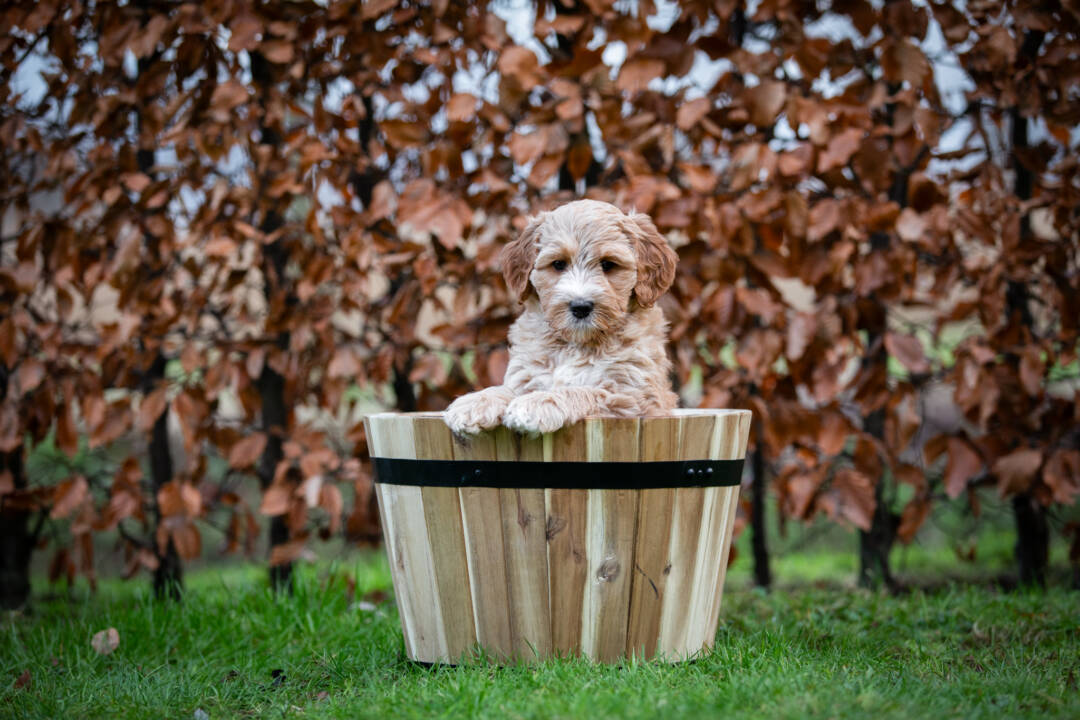Breeders
This is What the ALAEU Ensures
When you buy an Australian Labradoodle from an ALAEU breeder, you know you're getting a well-bred dog, raised with love and care. But what does that actually mean? Here’s an overview of what the ALAEU ensures:
Professional Diploma and Code of Ethics
All breeders who are members of the ALAEU adhere to strict breeding regulations and operate according to the Code of Ethics. Additionally, all ALAEU breeders hold a professional competency diploma. In this way, the ALAEU, together with the breeders, works to maintain the breed in a healthy and responsible manner. Additionally, the members of the ALAEU receive regular training.
Limiting Inbreeding
Inbreeding involves breeding a dog with a (blood) relative. As the only Labradoodle breeding association, the ALAEU enforces a maximum inbreeding percentage of 5%. When pairing a female and male dog, this percentage is checked to ensure it is not exceeded. This reduces the likelihood of passing on hereditary conditions.
Annual Eye Tests
Since dogs can have hereditary eye diseases, all breeding dogs undergo an annual eye test. This test checks for any hereditary eye abnormalities. If a dog is to be bred, the eye test must be conducted within the past year.
Testing for Conditions
To keep the breed healthy, the ALAEU requires breeders to have their parent dogs medically screened. Tests include:
- Heupdysplasie (HD): The hip joint, a ball-and-socket joint, consists of a femoral head and a hip socket. Proper alignment ensures stability. In hip dysplasia, the joint components do not fit well, causing instability, pain, and later arthritis. Causes include:
- Excessive or improper movement.
- Rapid growth and weight gain at a young age.
- Overfeeding.
- Heredity.
All breeding dogs are tested for HD by an orthopedic veterinarian, who takes X-rays of the hips. These are evaluated and classified by the Orthopedic Foundation for Animals (OFA) and/or using the PennHipp method. Only dogs that meet ALAEU standards are bred.
- Patella luxatie. This condition occurs when the kneecap dislocates, causing pain and lameness. Causes include overfeeding combined with lack of exercise, improper movement, injury, bowed legs, or torn knee ligaments, but it can also be hereditary. Therefore, all ALAEU dogs are tested for patella luxation. Dogs diagnosed with this condition (grade 1 or higher) are not bred.
- Elleboogdysplasie (ED). In ED, the elbow joint develops abnormally, often starting at a young age. It can be caused by rapid growth and uneven movement. ED can be hereditary, though environmental factors also play a role. It is more common in large, fast-growing dogs. Testing is done when the dog is twelve months or older.
- Rasspecifieke ziekten. Conditions such as Exercise-Induced Collapse (EIC), PRA/PRCD, and Degenerative Myelopathy are screened through DNA tests.
- Tevens tevens wordt er getest op Improper Coat dit is geen aandoening echter omdat veel mensen op deze vacht allergisch reageren wordt hierop getest.
Growing Up in a Warm Nest
All puppies from an ALAEU breeder are raised in a home environment. They receive plenty of attention and become accustomed to everyday situations they will encounter in their new homes. They are socialized with children, other dogs, and/or pets.
Do you have a question about breeding Australian Labradoodles or what the ALAEU ensures? Check out the frequently asked questions. If your question isn't listed, ask your breeder or contact us. We’re happy to help!



